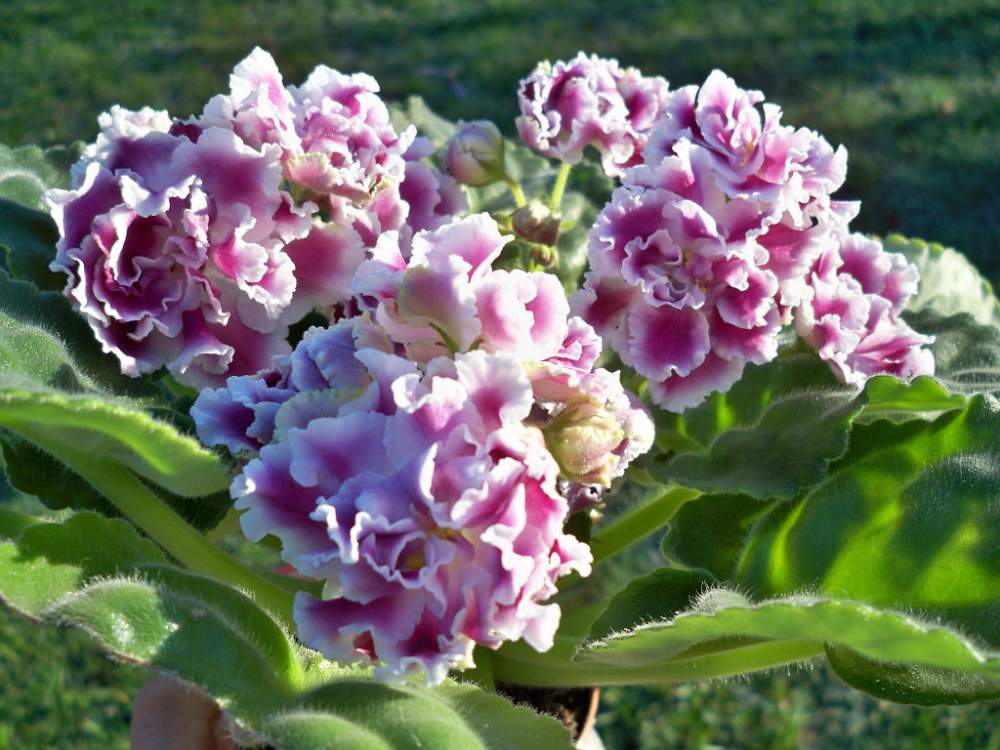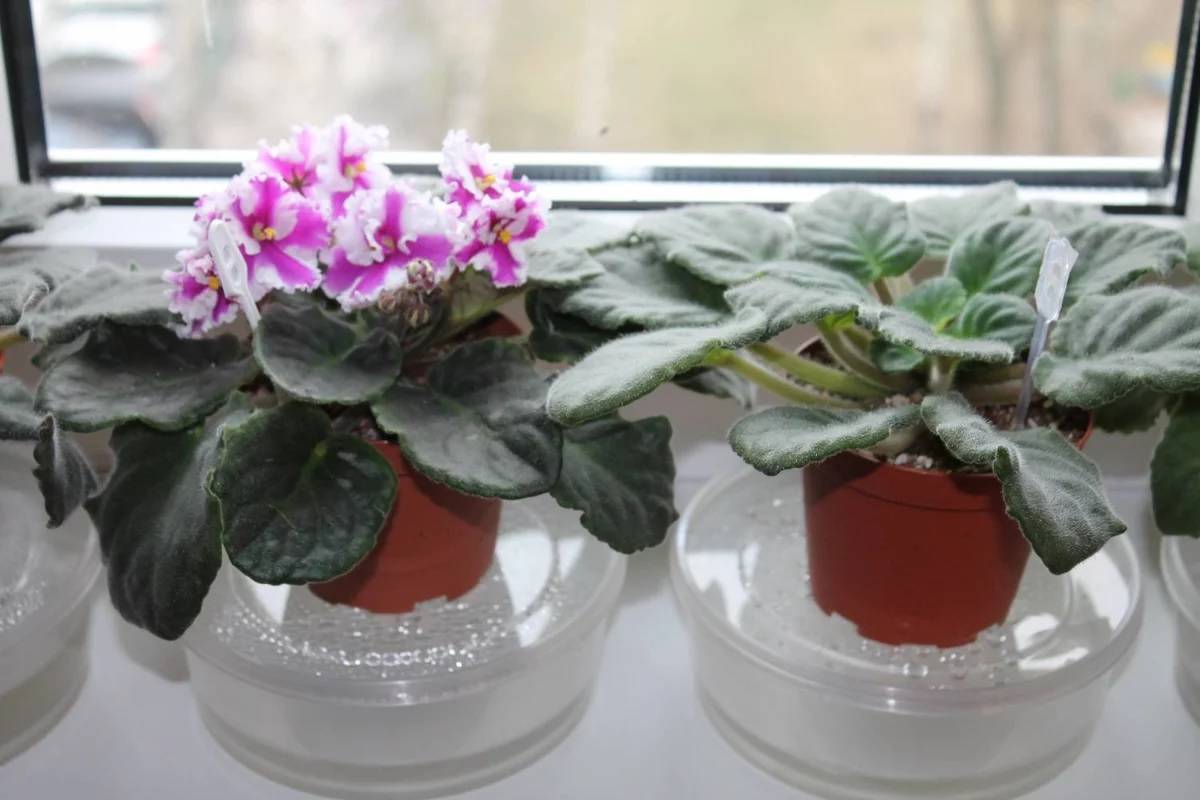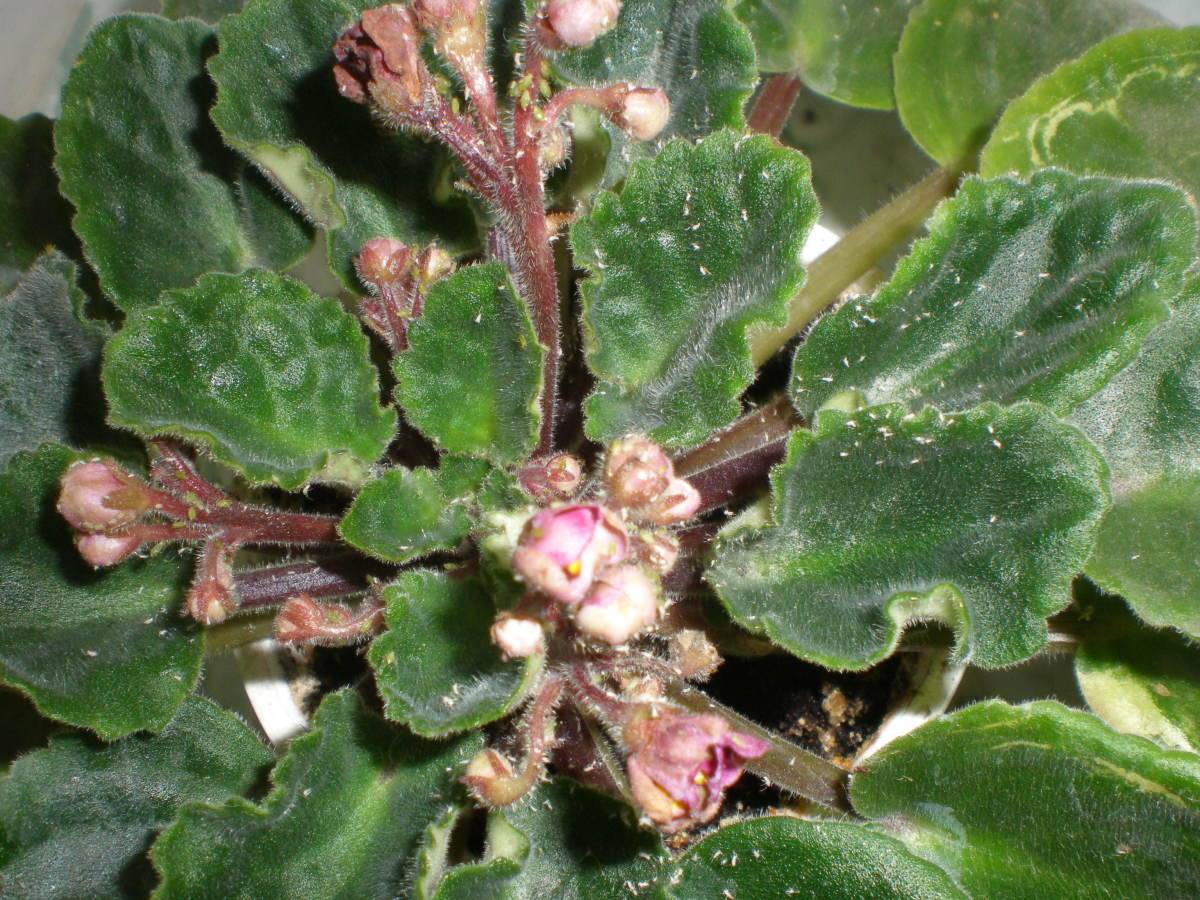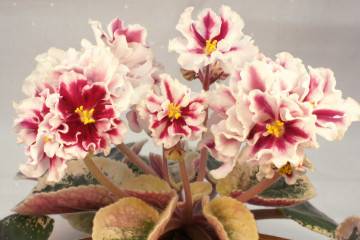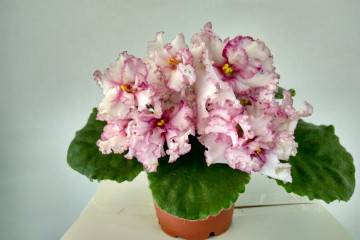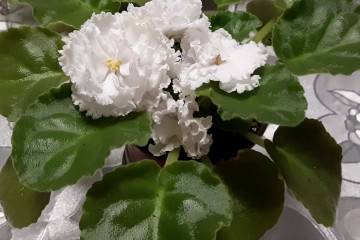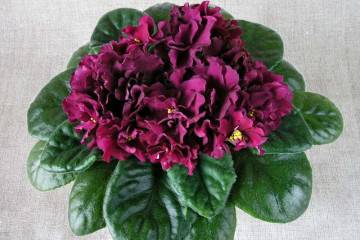Violet Duchess - description and characteristics of the variety
Content:
Currently, there are several dozen types of indoor violets. They attract florists with their striking appearance. One of these varieties is the Duchess. Despite the fact that the plant is quite capricious, it can decorate any interior. But before you start growing it at home, it is better to familiarize yourself with the care rules in advance.
What does a violet Duchess look like: description, main characteristics
This plant belongs to the Gesneriev family. It was developed relatively recently - at the beginning of the 21st century. The violet has curvaceous shapes and bright colors. In botany, she is a representative of the genus Saintpaulia. Despite the name, the flower does not belong to the violet family.
In the wild, this culture grows in the highlands of East Africa. In general, the Duchess is divided into two types:
- RS Duchess - bred in 2011 by Russian breeder Svetlana Repkina.
- violet Duchess Lux is a hybrid bred from the RS Duchess variety by a selective method.
In fact, the difference between these species is very small. Inexperienced gardeners easily confuse them with each other.
This indoor Saintpaulia has petals of incredible beauty. They can have a delicate plum or white hue and are collected in lush velvet buds. The leaves on the stems have a heart-shaped rounded shape and are terry to the touch on the upper side.
The Duchess blooms with buds gathered in dense groups. The surface of the petals is terry, and the edges are fringed with small villi. The flower can be up to 8 cm in diameter. Usually, no more than four buds can bloom on one bush. The main color of the flowers is dark purple (violet) with a white border along the outer edge and a yellow core.
Violet RS Duchess: features of home care
Saintpaulia Duchess is quite capricious in her care, therefore, for proper cultivation, it is necessary to comply with all the basic requirements.
Temperature
The quality of growth of violets largely depends on the correctly selected ambient temperature. An unexpected cold snap or warming will negatively affect the decorative appearance of the bush. The most optimal temperature will be 20-23 ° C. If the plant is young, then the heat level can be maintained at around 26 ° C.
Lighting
Saintpaulia Duchess loves sufficient lighting, but does not tolerate direct sunlight. The best option would be to put it on the windowsill of the eastern part of the house. If this is not possible, then you should provide it with a little shading.
Watering
A room violet must be watered with settled water at room temperature. It should be soft, free of chloride impurities. The frequency of moistening should be chosen so that the soil is constantly slightly moistened.If it dries up, the leaves will dry out and fall off.
At the same time, it is not recommended to water the bush from above, as this can cause leaf rot. It is best to fill the pot pan with water.
Spraying
The Duchess doesn't like spraying. It is worth doing this only in order to remove dust from the sheet plates. And after this procedure, the moistened surfaces must be blotted with a napkin.
Humidity
Although this variety of Saintpaulias loves frequent watering, at the same time, it has a negative attitude to high air humidity - the leaves and stems of the flower can die if excessive moisture gets on them.
Priming
Saintpaulia Duchess is a capricious flower, so the soil for her must be chosen carefully. The main requirement for the soil is sufficient air permeability. You also need to consider the following:
- the substrate must be rich in trace elements;
- nothing should grow in it before planting violets for a year;
- the land must be enriched with potassium and phosphorus in advance;
Top dressing
Throughout the year, the Duchess needs to be fertilized twice a month. After the transplant, you can take a break for 1-1.5 months. Special fertilizers for flowering plants are suitable for her. Top dressing must be done carefully, since an excess of them will have a greater negative impact than a lack.
When and how it blooms
Each violet bud has 5 double petals, forming a voluminous bouquet reminiscent of lush balls. A fully opened bud resembles a rose. Flowering occurs from September to March. Then a small seed capsule is formed.
During the flowering period, the care of the plant changes slightly. He needs to provide a lot of free space and the temperature is slightly lower than usual. You also need to choose the right soil and container for growing and provide a regular flow of fresh air.
How Duchess RS reproduces
There are several ways to propagate the Duchess at home. Some require a lot of effort and time, while others are simpler and more accessible for beginners.
Germinating seeds
It is very difficult to get a full-fledged strong plant in this way. Many special conditions are required in order for the germinated seedlings to grow actively.
Cuttings
The vegetative method is the simplest and most popular. To do this, it is enough to choose the healthiest leaf, cut it off and place it in warm water. As soon as it gives roots, you can transplant it into a glass or small pot.
It is necessary to deepen the petiole by no more than 2 cm. To create greenhouse conditions, the container is covered with a film and placed in a warm place. The seedling will finally take root in 4-5 weeks.
Transplant after purchase and during reproduction
It is not worth replanting a violet unnecessarily. Only if the plant is sick should it be moved to new soil. As a last resort, you can transplant the bush into a larger pot if it has grown a lot. It is better to do this by transshipment method.
Possible growing problems
Like many other indoor plants, the Duchess variety is susceptible to disease. Before you deal with them, you need to determine the cause of the problem.
Leaf problems
If the plant suffers from excessive moisture, then the leaves and roots may undergo fungal infection. In this case, they should be treated with fungicides. Also, the bush can be affected by powdery mildew, gray rot and fusarium. They are caused by low temperatures, drafts or improper watering.The affected areas must be removed immediately.
Pests
The main pests that pose a threat to violets are spider mites, worms and aphids. Regular fungicide treatment will help get rid of them. During flowering, the plant can become infected with root-knot nematode. In this case, the only way out is to get rid of the plant, soil and pot.
Signs of improper care
Improper care can be the main reason for the appearance of diseases. Gray rot appears if water gets on the leaves during watering. When the shrub is treated with cold liquid, yellow spots may form on the plant. The bush dries up if the temperature is too high or the humidity is too low.
Thus, although the Duchess is a rather capricious flower to care for, with enough patience, you can get a vibrant houseplant that will bloom every year.
